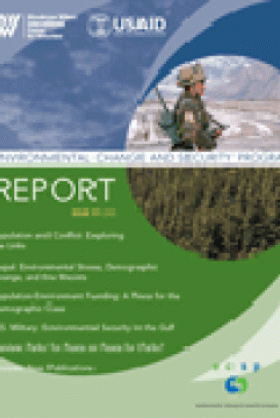Environmental Stress and Demographic Change in Nepal: Underlying Conditions Contributing to a Decade of Insurgency


In this article, we review the broad dynamics of Nepal’s current civil conflict. We argue that environmental stress and population factors have played significant roles in creating the underlying conditions for acute insecurity and instability. Through a brief case study of the Koshi Tappu Wetland area, we show that this situation is evident not just in the Maoist strongholds of western Nepal, but even in remote areas of the east, thus encircling the capital region. We conclude that it will be difficult to resolve the conflict unless the underlying demographic and environmental conditions receive more attention than they have to date.
Authors

Environmental Change and Security Program
The Environmental Change and Security Program (ECSP) explores the connections between environmental change, health, and population dynamics and their links to conflict, human insecurity, and foreign policy. Read more




